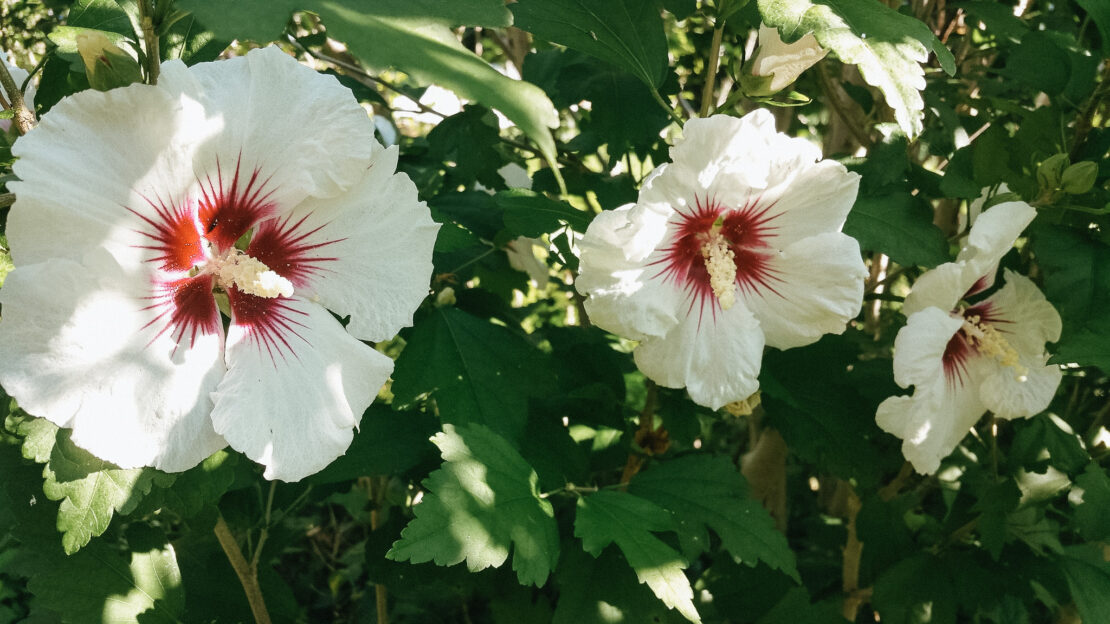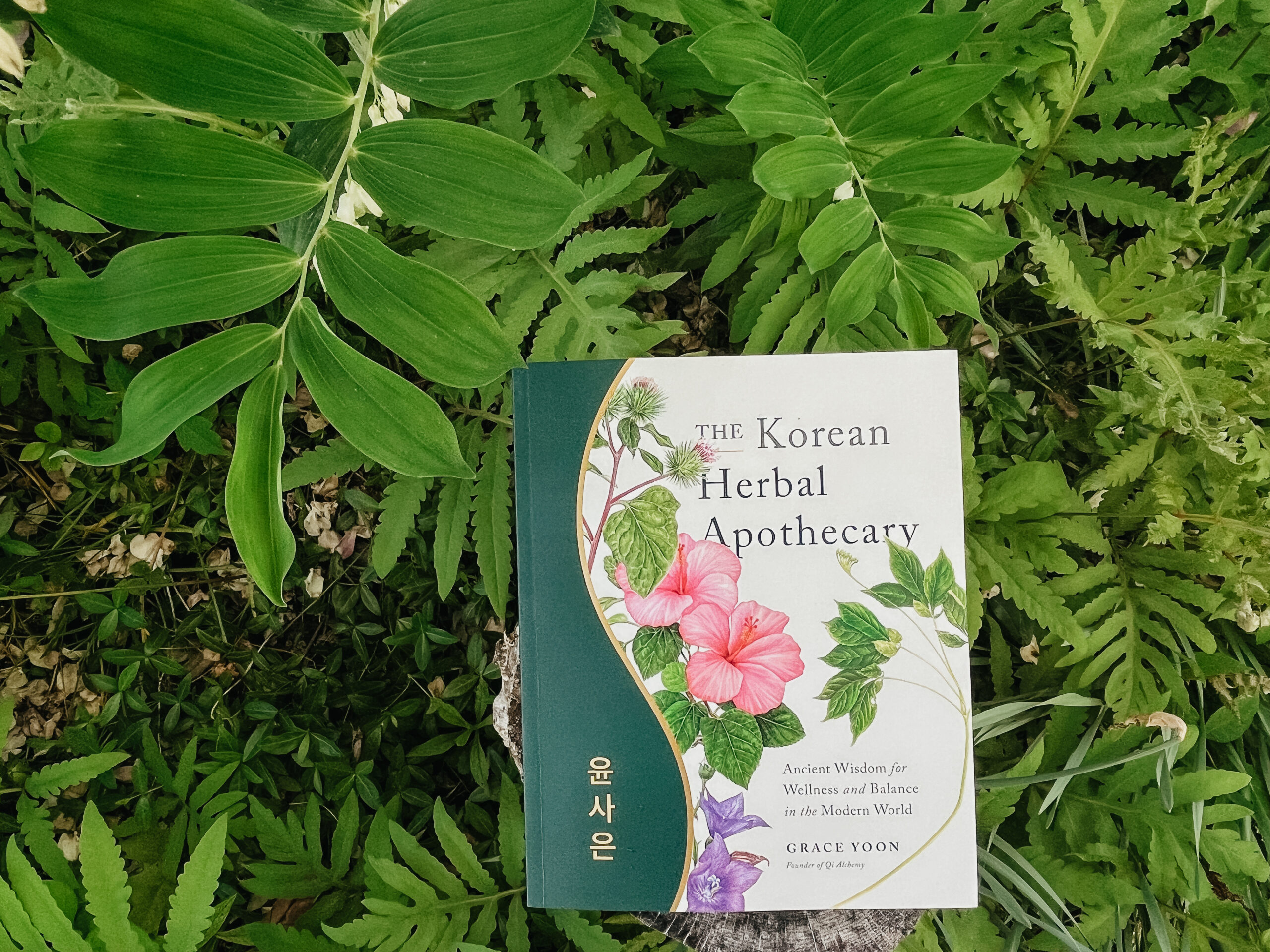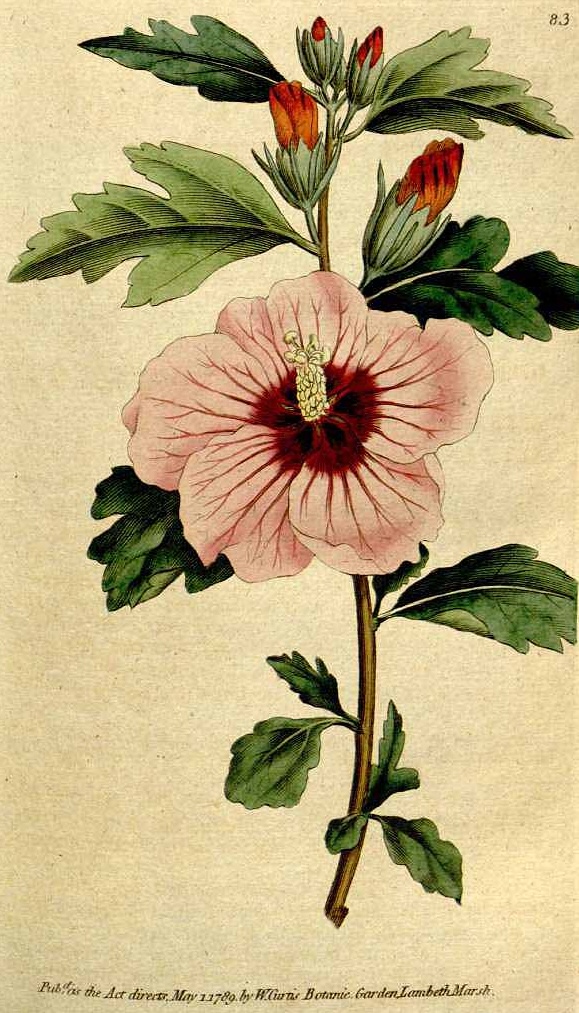
Everyday Korean Herbs + a Hibiscus Jujube Tea Recipe
In our new Everyday Korean Herbs Intensive available in The Herbarium, herbalist Grace Yoon, author of The Korean Herbal Apothecary, deep dives into the many different aspects of herbal traditions in Korea. This intensive covers topics of interest ranging from specific Korean herbs for beauty to Confucianism and its philosophical influence on Eastern perspectives on health, to what the design of the Korean flag says about the well-being of its citizens.
The Everyday Korean Herbs Intensive highlights recognizable, cross-culturally available herbs that have stood the test of time, and focuses on practical and easy application of Korean herbs in daily life as a way to improve health naturally.
Cultivating an understanding of various traditions in global herbalism improves our own comprehension of our connection with herbs, ritual, and time-honored paths to wellness. Becoming deeply rooted in historical and place-based traditions is an important part of developing a well-rounded, holistic perspective on herbalism’s current role in global healthcare.
The Korean tradition, in particular, is rich with meaning, recipes, and usages associated with herbs like Korean hibiscus (Hibiscus syriaca), Korean mugwort (Artemisia princeps or A. vulgaris), and garlic (Allium sativum). Contemporary Korean herbalism carries on many of the traditions that have been in place for centuries surrrounding these herbs, from the fermented garlicky condiment kimchi to tart hibiscus tea, as shared in the recipe below.

The Balancing of Qi
Concepts of vitality and balance, deeply rooted in the ancient philosophy of qi, play a central role in shaping various aspects of daily life in Korea. Vitality, pronounced “key” in Korean, encapsulates the vital energy, a foundation of maintaining a delicate balance within the body and mind, with qi serving as the guiding principle for achieving this equilibrium. Embracing the philosophy of vitality and balance, Koreans seek to harmonize their inner energies with the external world, fostering a holistic approach to health and wellness.
Qi is an energetic life force that is inside each of us, an ancient healing concept rooted in Taoist philosophy from 400 BCE. In this ancient concept, everything under the sun and moon is composed of qi, and time has a way of showing the alchemy of life through qi. The life of a tree is qi—a cyclical thread connecting all beings that governs all things in heaven and earth. Qi is the common denominator of all things from an acorn seed to the total energy of the universe. The qi of the sun, rain, and soil resonate with the qi of an acorn to bring forth a tree that already contains the germ of the seedling and qualities that the sun, rain, and soil touch. Qi is the fundamental quality of being and becoming.
Hibiscus: An Essential Korean Herb for Vitality and Balance
The national flower of South Korea is also one that is used to support the health and qi of its people. Mugunghwa, or Korean hibiscus (Hibiscus syriaca), is an herb for vitality and balance that helps to maintain steady qi and is delicious incorporated into dishes and beverages.
Mugunghwa, the eternal blossom that never grows faint.
Even during dark and weary days, you are devoted to stay.
Spirit and splendid beauty, you represent Korea.-Grace Yoon
Korean Hibiscus, Rose of Sharon (Hibiscus syriacus)

Boasting white to pink-lavender blooms on hardy deciduous shrubs, the Rose of Sharon is Korea’s national flower, symbolizing the resilience and beauty of the Korean people. The plant is known for its adaptability and ability to thrive in various soil conditions, mirroring the resilience and versatility associated with Korean identity. It grows near sea cliffs, along streams, and sometimes along roadsides.
Summer is the best time to drink cooling hibiscus tea. A decoction of the root bark has herbal properties that help soothe fevers, quench thirst, and ease inflammation. The leaves and flowers can be consumed raw or cooked and have a mild flavor. I love sprinkling the flower petals in my salads to add vibrancy and brightness. The Rose of Sharon stands as a living emblem, intertwining nature with the cultural fabric of Korea, and continues to be cherished for its aesthetic allure and symbolic representation.
Korean name: 무궁화 [mugunghwa]
Family: Malvaceae
Binomial: Hibiscus syriacus
Other Names: rose of sharon, rose mallow
Parts Used: calyx, leaf, flower, root bark
Taste and Energetics: Sour, cool, moist
Native To: Eastern Asia
Properties: antioxidant, anti-inflammatory, diuretic, emollient, hypocholesterolemic
Indicated uses: Internally, hibiscus is used as a hydrating drink for feverish and thirsty states, and for minor cases of hypertension and high cholesterol. Externally, hibiscus can soothe itchy skin because of its rich emollient properties.
Nutrients: rich in antioxidants such as vitamin C, beta carotene, and anthocyanin (Karunarathne et al., 2019; Yoon, 2023).
Sip and savor the vibrant and tangy flavors of homemade hibiscus tea. This hibiscus tea recipe yields a beautifully colored, fragrant beverage with a delightful tartness. Rich in antioxidants and known for its potential health benefits, hibiscus tea is a refreshing choice for any time of the day, whether served hot or cold. Adjust the sweetness and garnishes to suit your taste preferences and embrace the natural, floral goodness of hibiscus.
2 cups dried hibiscus (Hibiscus syriacus) petals (calyces)Hibiscus Jujube Tea Recipe
4 jujube (Ziziphus jujuba) dates
4 cups water
1-2 tablespoons honey or sweetener of choice (optional)
Slices of citrus fruits (orange or lime) for garnish (optional)
Fresh mint leaves for garnish (optional)
Ice cubes (optional)
The Everyday Korean Herbs Intensive
Learn more about herbs and recipes that maintain and balance vitality and qi, such as astragalus (Astragalus mongholicus) and Korean ginseng (Panax ginseng), in the Everyday Korean Herbs Intensive.
In this Intensive, herbalist Grace Yoon covers practical, hands-on ways of incorporating lauded Korean herbs into everyday life with easy recipes, simple rituals, and herbs you are likely to have at home. We also explore the underlying philosophies and principles of what makes Korean herbalism so distinctive, infusing rich meaning into these herbal recipes and healthful habits. Grace is the author of The Korean Herbal Apothecary, a book which dives even deeper into Korea’s extensive history of herbal tradition.

Ready to learn more? If you’re already a member of The Herbarium, you can log in for immediate access to the Everyday Korean Herbs Intensive, where you’ll find an in-depth discussion of this topic full of insights from author and teacher Grace Yoon, including:
Session 1 | Ancestral Roots of Korean Herbalism: Session 1 explores the author’s heritage and connection to the topic and why the geography of the Korean landscape lends itself to being a place of thriving herbalism. Through Korean folktales and the symbolism of the flag, the session delves into important Korean herbal traditions and herbs including mugwort and garlic.
Session 2 | Essential Korean Herbs: This session features some of the most important beneficial Korean herbs in various categories: herbs for vitality and balance, herbs for beauty, and herbs for sleep. It also includes the fundamentals of Korean herbal preparations and what makes them unique.
Session 3 | Eastern Philosophy & Korean Constitutional Herbal Medicine: An understanding of Korean herbs isn’t complete without knowledge of the three Eastern philosophies or religions practiced in most Asian countries—Buddhism, Confucianism, and Taoism. This session also explores Sasang Constitutional Medicine, a traditional Korean health system categorizing individuals into four distinct types.
The three sessions in this Intensive each offer important lessons on Korean herbalism and include both written text and video to provide further understanding of this important tradition in herbalism.
Not a member yet? Get access today with a 3-day trial for only $3!
The Herbarium is our ever-expanding, illuminating virtual collection of over 200 (and counting!) searchable herbal monographs, topic-specific intensives, and numerous articles, videos, ebooks, and helpful downloadable resources. Members also gain instant access to several other intensives on popular topics, such as the Sustainable Herbal Supply Chain Intensive and A Holistic Approach to Fertility. The Herbarium is crafted to help you learn and grow in your herbal journey!
Learn more and sign up for The Herbarium here.








